Lahore Museum
The Lahore Museum is the oldest cultural museum in Pakistan. It aims to inform its visitors about Pakistan’s rich and varied history through its collections. The Lahore Museum’s goal is to preserve and advance Pakistan’s rich cultural, artistic, and material legacy. Artifacts from many different countries and locations, including Burma, Nepal, Bhutan, Central Asia, Tibet, Africa, and the Middle East, are on display in the museum. If you are interested in the history of South Asia, you must visit this most visited museum in Pakistan.
History of Lahore Museum
The British government first established the Lahore museum on the location of the existing Tollinton Market in a hall built for the 1864 Punjab Exhibition. With the money raised from a particular public fund, the government made the current structure in 1887 to commemorate Queen Victoria’s Golden Jubilee. Prince Albert Victor laid the new museum’s foundation in 1890. Government officials moved the entire collection to the current structure in 1894 and named it Jubilee Museum. During the partition of Punjab, Pakistan and India also divided the museum artifacts. However, Jubilee museum retains 60% of its collection. India constructed Government Museum and Art Gallery in Chandigarh to place these artifacts. Here in Pakistan, it is the most famous museum among foreigners.
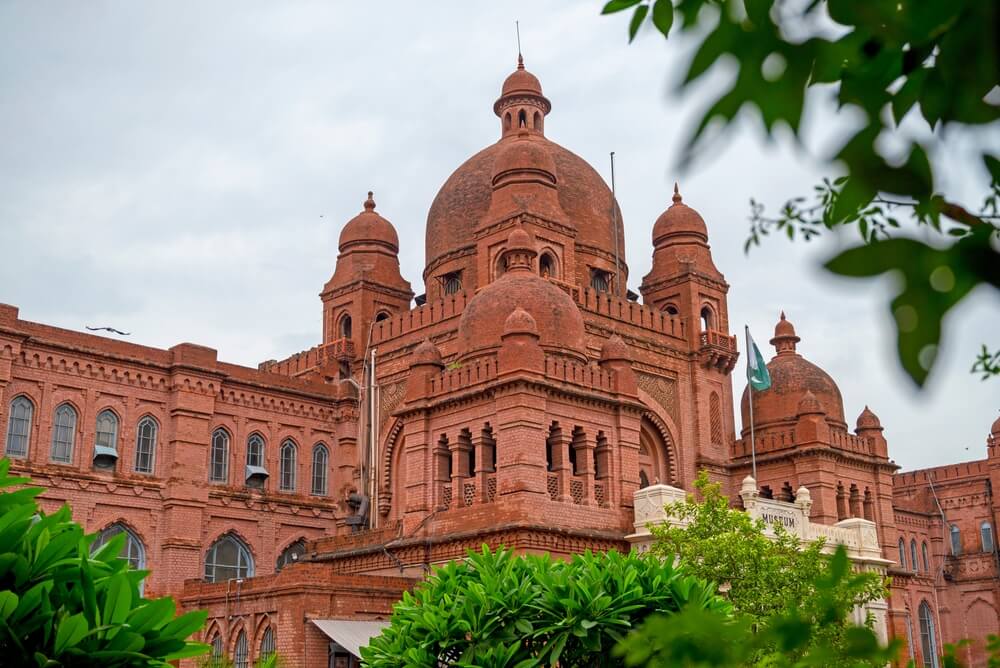
The architecture of the Lahore Museum
The beautiful red-brick Lahore Museum building is a magnificent example of serene architectural details. It combines superb British touch with the traditional ancient Mughal architectural style and thus creates one outstanding piece in the city.
Sir Ganga Ram, a renowned architect from Lahore, designed the current structure. The Lahore Museum’s front elevation displays a central transept bordered by wings in the shape of arcades. These wings end in side-by-side projected galleries. The architect combined Western influences with Indian architecture and decoration elements.
Attractions Offered by Lahore Museum
The museum has a wide range of artifacts and exhibits that fascinate visitors. Visitors can view the history of Islam, Buddhism, Hinduism, Sikhism, and Jainism. There are also many different exhibitions, including Gandharan sculptures, a collection of rare manuscripts, weapons, clothing, carpets, coins, and more, that visitors can witness in its galleries.
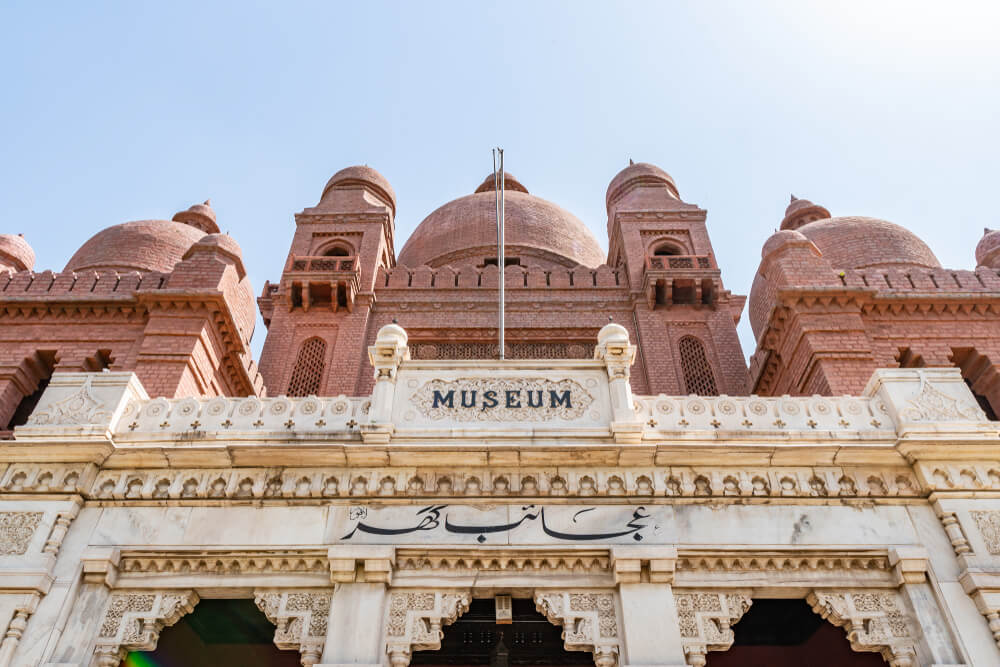
Galleries in Lahore Museum
Pakistan Lahore Museum has many galleries with a permanent collection of about 60,000 items with historical, artistic, and cultural significance. So, let’s explore the galleries of Pakistan’s largest repository.
General Gallery
The wooden doors from the Haveli Hari Singh Nalwa in Gujranwala and the wooden relics from Kafiristan are among the decorative and materially significant items on display in General Gallery. This Gallery is also home to artifacts and collections that different private groups have donated to the Lahore Museum. Manuscripts, metal and glass objects, potsherds and other archeological finds, coins, medals, and other random things presented by Maulana Hifz Ur Rehman are among the wide range of diverse works displayed in this Gallery. Kamil Khan Mumtaz, a historian and architect donated African artifacts in 1971. These miscellaneous African artifacts are also on display.
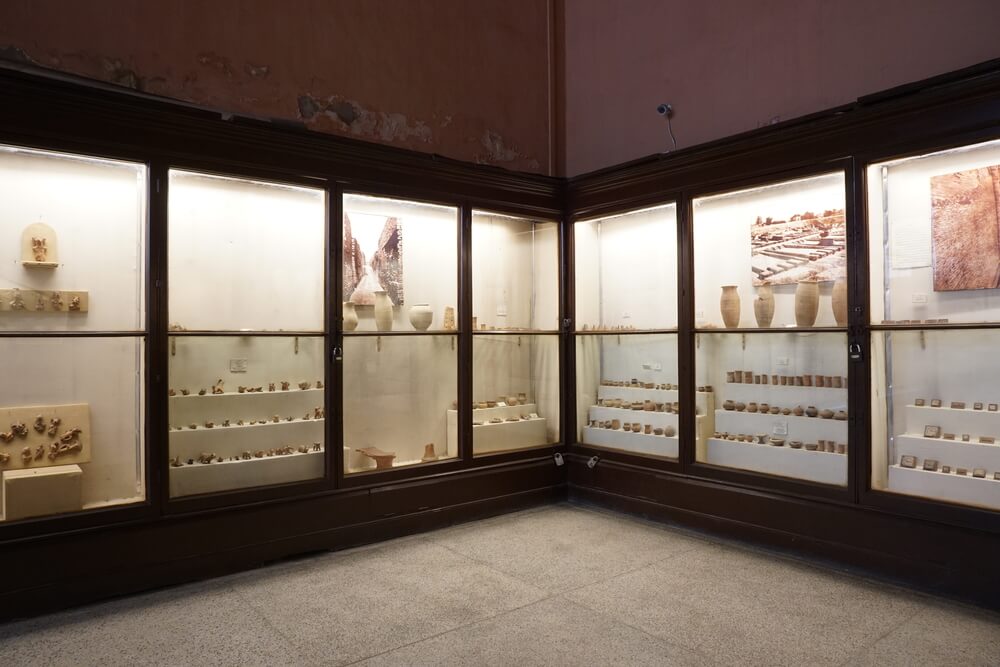
Contemporary Paintings Gallery
The museum houses a distinctive collection of contemporary Pakistani paintings created by well-known Pakistani artists and a sizable number of Bengal School works. Pre-Partition artists and artists who helped Pakistan define mid-century Modernism created the masterpieces displayed in this Gallery. The collection covers Pakistan’s entire history of painting and features painting in various techniques and aesthetics.
Miniature Paintings Gallery
One of the largest and most comprehensive collections of miniature paintings on the Indian Subcontinent is in the Lahore Museum. Early in the 20th Century, the collection started to grow. It has more than a thousand paintings, spanning the early 16th Century to the 20th Century. Folios of Jain manuscripts and artwork from the Persian, Imperial, Provincial, and Bazar Mughal workplaces are among them. Additionally, this Gallery contains miniature paintings from the Pahari and Rajput schools. This collection also includes intriguing examples of ivory miniatures and Sikh portraiture.
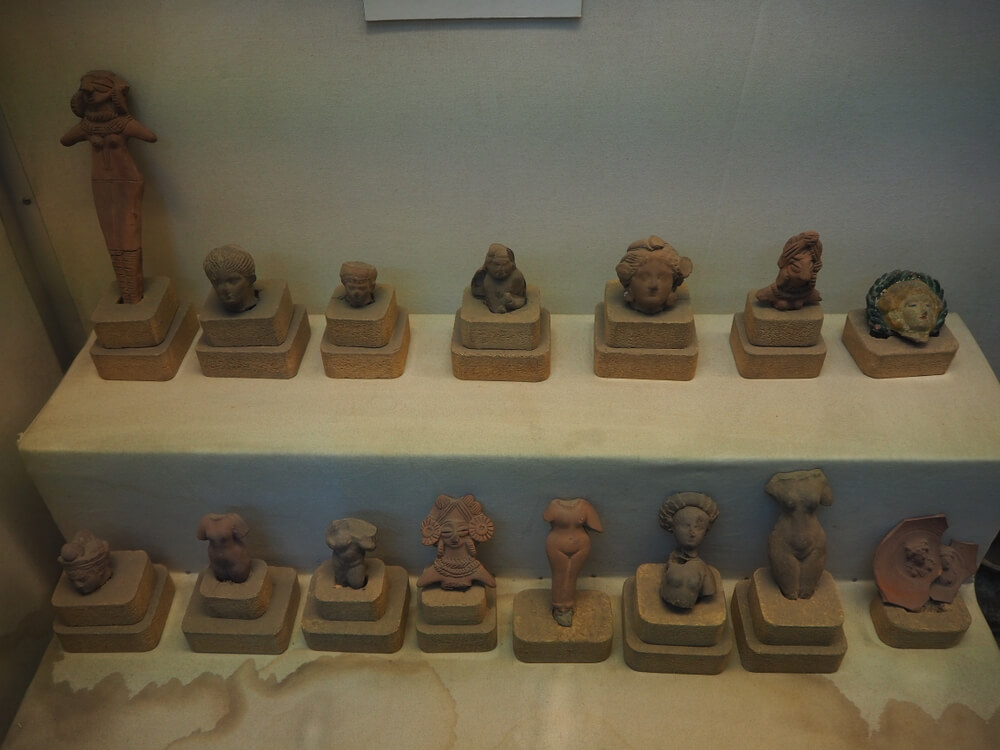
Arms and Armory Gallery
The Arms and Armaments gallery features a variety of weapons from early British, Muslim, Sikh, and Hindu cultures. It includes arrows, Khandas, swords used as sacrifices, goads used to prod elephants, and other items. Spears, curved swords with steel blades soaked in black crystal water and simple and carved handguards, accented and enameled shields, mail jackets, body armor, and arm and leg guards are some examples of weapons from the Muslim era. Knives, spears, daggers, and lances are examples of weapons from the Sikh Era. A wooden pedestal-mounted gun barrel with the Sikh Sardar Fateh Singh’s name and the year 1798 is at one end of the Gallery.
Pakistan Movement Gallery
The Pakistan Freedom Movement Gallery tells the story of the fights for freedom from 1757 to the establishment of Pakistan in 1947 using paintings, photographs, and newspaper clippings. It is a collection of monochrome pictures.
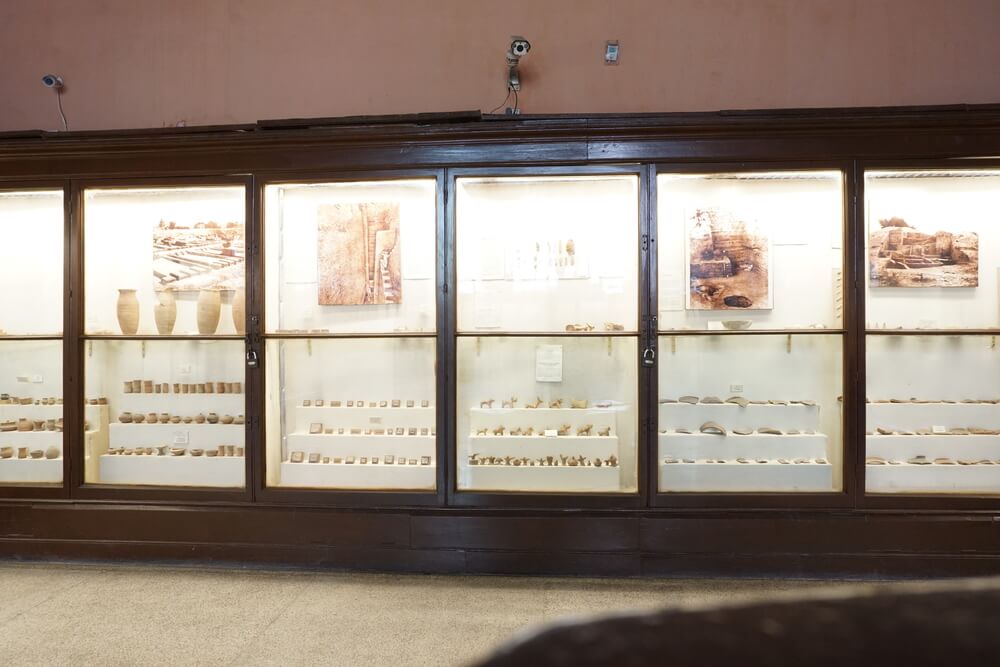
Postage & Stamps Gallery
The first postage stamps printed by Pakistan to commemorate its independence is one of the notable postal stationery items on display in this Gallery. The Government of India Security Press on Nasik Road in India and later the Government presses in Pakistan produced the first stamps.
Manuscripts Gallery
A magnificent carved wooden doorway from the Jhang region welcomes visitors to this Gallery. Museum divides the Manuscripts Gallery into three sections, including the Quranic, Persian, and other manuscripts of Hadeeth, literature, biography, guides, encyclopedia, geography, and history. Arabic script styles used in Quranic manuscripts include Kufic, Magharabi, Naskh, and Bahar. Scripts are decorated, illuminated, and illustrated.
Coins Gallery
With 40,000 pieces, the Coin Collection of Lahore Museum is one of the largest in the Subcontinent. It contains the earliest examples of punch-marked coins from the Achaemenian Empire’s seventh or sixth century BC.
This collection features artifacts from nearly every significant ruling family in the area, including the Arabs, Hindus, Huns, British, Sikhs, Durranis, Ghaznavids, Mughals, and Sultans. This Gallery also includes the coins collection from present-day Pakistan. Due to its rarity and wealth, this collection is of interest to scholars worldwide.
Pre-Historic & Indus Gallery
The Indus Valley Civilization Gallery displays various pre-historic and protohistoric eras. Among the earliest items made by humans are the Stone Age tools from Soan Valley. The oldest exhibit in the Gallery dates back 500,000 years. Objects from Mehrgarh, a stone-age site in Balochistan famous for its continuous human occupation from 7000 to 2500 BC, represent civilization’s beginning. The remaining portion of the Gallery features artifacts from two significant Indus Valley sites, Harappa and Mohenjodaro (3500–1500 BC). The artifacts on display include gaming items, toys, measuring weights, jewelry made of terracotta, wheel-turned pottery, and various other daily-use items made of clay and bronze.
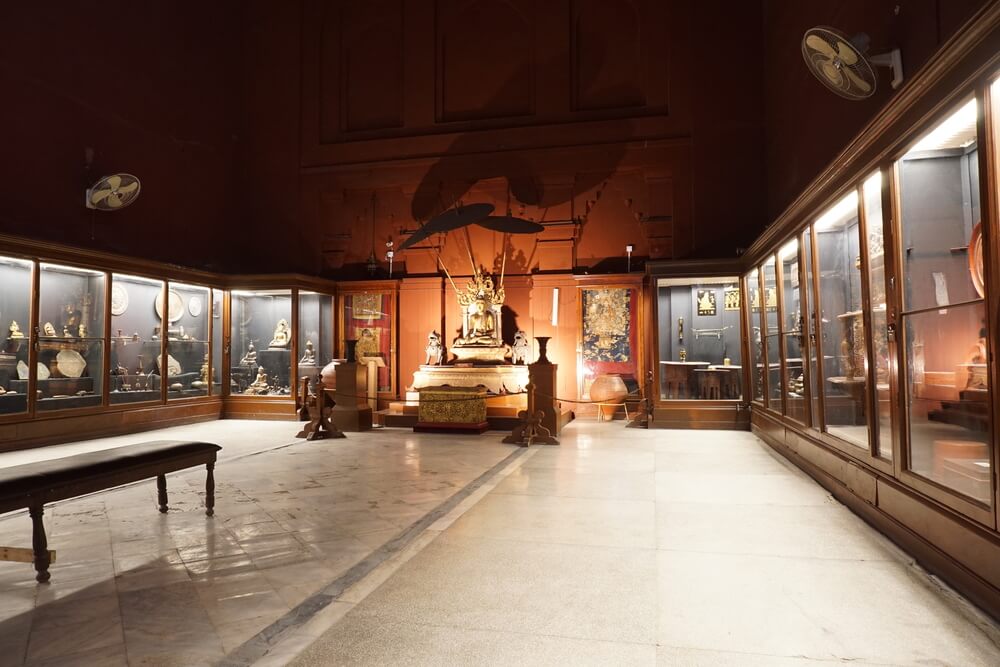
Hindu, Buddhist, and Jain Gallery
The objects with religious significance related to Hinduism, Jainism, and Buddhism are in the four sections that make up this Gallery. The works in the four sections come from the Indian Subcontinent, Burma, Nepal, and Tibet. Most of the pieces date from the late 19th and early 20th centuries, but a few go back to the 7th Century. A part of stone with sculpted statues of Shiva and Parvati, an intricately carved figure of Vishnu, and a large Shiva lingam from the Jhelum region dating from the 7th or 8th Century are some of the highlights of the Gallery. Additionally, there are wood carvings from Nepal, painted tankas, jewelry, metalwork, and statues made of gilded bronze, primarily representing the Tantric cult in this Gallery.
Gandhara Gallery
During the first five centuries of the Christian era, the Gandhara region served as the birthplace and heyday of the Mahayana Buddhist religious sculptures known as Gandharan art. Gandharan art evolved during the rule of Kushan emperors and under the influence of the Philhellenic dynasties of Greeks who came before Kushans in this area. Sculptures and panels in this Gallery depict the life story of the Buddha.
Ethnological Gallery
Ethnological Gallery displays the cultural things from different regions of Pakistan. It also features an exhibit from the British colonial period.
Islamic Gallery
This Gallery features works of Islamic art created during the Mughal and Colonial eras. The items are symbolic of the Indian Subcontinent’s Arts and Crafts movement. On a platform, the middle of the Gallery is a sizable carpet made in Lahore during Shah Jahan’s rule over the Mughal Empire.
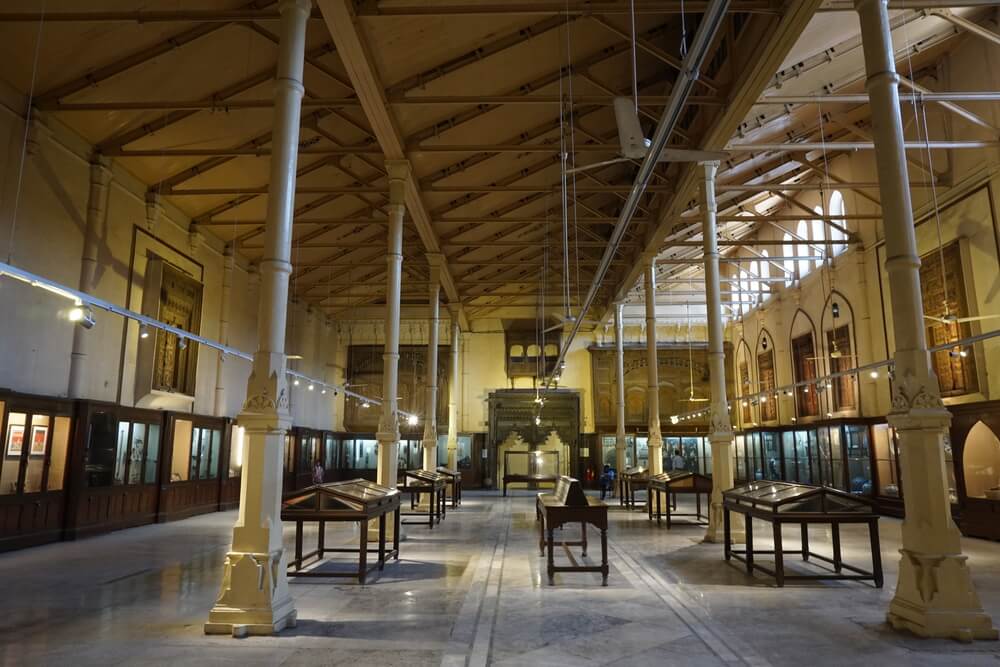
Sikh Gallery
The Sikh gallery houses religious artifacts and personal effects from Sikh emperors and people close to them. It contains Sikh-period miniatures, official documents, the clothing of Maharaja Ranjeet Singh, and other unique products.
Facilities Offered by Lahore Museum
Free Library
Established in 1894 as a part of the Lahore museum, the research and reference library features a variety of collections, including books, pamphlets, periodicals, reports, and articles related to museology, arts, culture, anthropology, architecture, archaeology, oriental languages with a particular focus to the history of Pakistan. Situated on the upper floor of the museum, the library provides a source of ample knowledge to visitors.
Auditorium
Another facility the prestigious Lahore Museum provides is a spacious auditorium with more than two hundred seats. A large stage, sound system, and air conditioner are available to organize workshops, seminars, and various gatherings.
Open for Events
The Lahore National History Museum organizes several events, seminars, and workshops to increase the general public’s knowledge. Expeditions are arranged in the museum, attracting a large crowd of people.
Kim’s Book Shop
This store opened its doors in 1968. It is one of Lahore’s most well-known bookstores. It is famous for its selection of titles, including sections on the city’s history, travel guides, carpets and textiles, architecture, Islamic art, and culture.
Curio Shop
The curio shop at the Lahore Museum has a wide selection of souvenirs, decorative art and craft items, cultural jewelry, and adorned samples that are worthwhile buying for art enthusiasts.
Lahore Museum Ticket Prices & Booking Procedures:
There is no particular booking procedure, you have to deposit your belongings at the entrance, pay for the ticket, and you are good to go to explore the vast collection of relics. Detail of the ticket price given below:
For Adults: Rs 50/-
For Students: Rs.20/-
For foreign visitors: Rs.1000/-
Lahore Museum Library Membership Procedures:
To gain membership in the library, you should have a BA degree in any discipline. Researchers and students will be given a membership for a limited period. There are certain categories of membership and specific fees. You have to show your degree and select a category for membership.
Lahore Museum Pakistan Timings:
Lahore Museum is open to the public and tourists on all days of the week except Friday. Moreover, it is closed for maintenance on the first Monday of every month. Timings followed in Winters: 9 AM to 4 PM, in Summers: 9 AM to 5 PM.
Location of Pakistan Lahore Museum:
The Lahore Museum, also called Lahore Wonder House, is located in the heart of Pakistan on Shahrah-e-Quaid-e-Azam, The Mall Road, adjacent to the National College of Arts, Lahore, Punjab.
FAQs
Why is Lahore Museum famous?
The large-scale collection of historical artifacts in the Lahore Museum makes it one of Pakistan’s most famous and highly regarded museums. The magnificent Lahore Museum embodies the history of several eras, including the Mughal, British, and Sikh. This museum is home to an extensive collection of cultural, ethnic, aesthetic, and historical relics belonging to different religions and empires. It is the most visited museum in the country.
When was Lahore Museum built?
Built during the British colonial period in 1865-66, the museum’s old building was in Tollinton Market Lahore. Later, the authorities decided to move the museum’s collection to a new building. The new museum was founded on 3rd February 1890 by Prince Albert Victor, Duke of Clarence and Queen Victoria’s grandson. The museum curators transferred the whole collection of the museum into the new present building located on Mall Road, Lahore. The museum opened to the public in 1894.
Who designed Lahore Museum?
The renowned architect, Sir Ganga Ram, designed the current building of the Lahore Museum in the syncretic Indo-Gothic Revival architectural style.
How many galleries are in Lahore Museum?
Lahore Museum consists of up to 13 unique galleries, namely Gandhara gallery, Coin Gallery, Pre-historic and Indus Gallery, Pakistan Movement Gallery, Manuscripts Gallery, Postage and Stamps Gallery, Miniature Paintings Gallery, Hindu, Buddhist and Jain Gallery, Islamic Gallery, Sikh Gallery, and Ethnological Gallery.
Do you need to book in advance to visit Lahore Museum?
It is unnecessary to book in advance, but if you want, you can visit the website of Lahore Museum, which I’m linking here: https://lahoremuseum.punjab.gov.pk/. In case of any queries contact on (042) 99211819.
Conclusion
Lahore National History Museum has stood tall for many centuries and is a source of great pride for the Pakistani people. This historical monument is a source of immense information about the history and culture of Pakistan. Lahore Museum Pakistan is a center of attraction for local and international tourists from all over the globe. The treasure of national heritage it holds is beyond comparison. If you are interested in exploring an extensive collection of historical artifacts, this place is for you!
